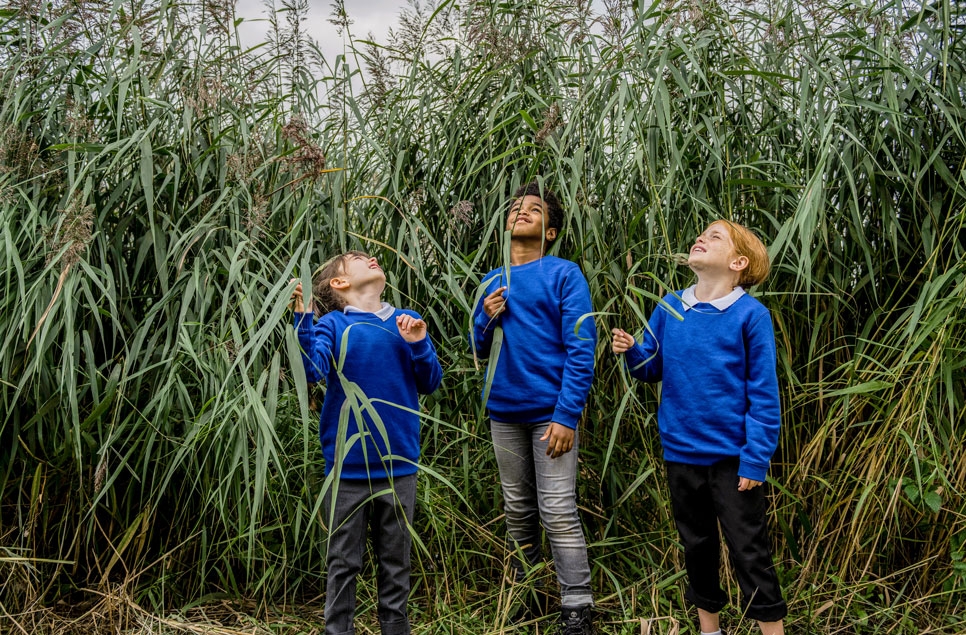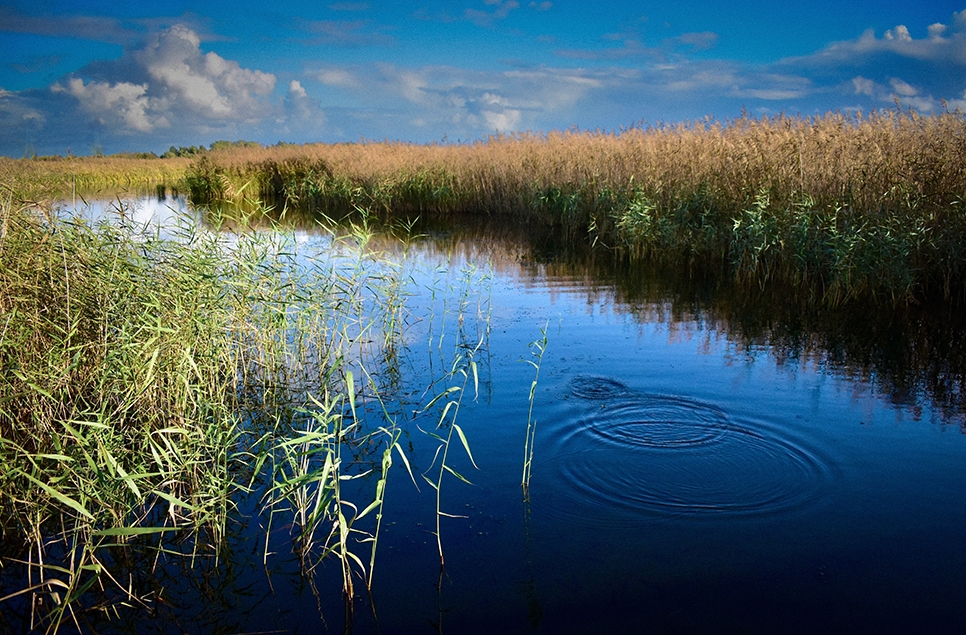Migrations series: Which birds are arriving in the UK in autumn?
Lively, noisy and often spectacular, winter migratory birds are a welcome sight as the nights draw in, bringing new life to the landscape. Here are a few common migratory species to welcome back.
At the end of September, it can feel like the world is pausing. Our fair-weather birds have all set off south, leaving the lonely call of the robin the only constant from our windows. But the moment of calm is a short one.
Before we know it, our wetlands are alive again with wintering water birds arriving: sporadic skeins of geese, swan family groups, droves of ducks and wading birds. Lively, noisy and often spectacular, these winter migratory birds are a welcome sight as the nights draw in, bringing new life to the landscape.
Here are a few common migratory species to welcome back...
Russian White-fronted goose
Anser albifrons
Where: Largest numbers in the Thames Estuary and The Wash, small numbers regularly seen at WWT sites

Thousands of these birds used to winter in the south of England, migrating from their breeding grounds in arctic Russia. However in recent years as our winters become milder, they’ve been stopping short in Europe. You can still see flocks in the hundreds at Slimbridge. These birds, compared to their Greenland cousins flavirostris, are slightly smaller, shorter necked, lighter plumaged and with a slightly smaller, pink bill.
The population of the Greenland white-fronted goose has gradually declined since the mid-1990s, and we think the increasingly late arrival of spring and competition with other geese is affecting their breeding success.
Find out moreBarnacle goose
Branta leucopsis
Where: WWT Caerlaverock

Barnacle geese descend from their breeding grounds in a variety of northerly locations. Greenland birds fly to Iceland first before migrating onto Ireland and the western Isles of Scotland. Spitsbergen (part of the Svalbard archipelago) birds migrate via the Norwegian coast to winter on the Solway Firth, at WWT Caerlaverock. They can fly at around 65 km/h. People used to believe that these geese hatched from similarly coloured goose barnacles, hence the name, as no one on their wintering grounds ever saw them nesting! That is until people began fitting these geese with electronic tags, so nowadays we fortunately know better, but the geese still have a bit of a mysterious air to them.

Barnacle geese are truly amazing creatures, deliberately nesting in high up places so the goslings must freefall to the ground just after hatching!
Find out whyLight-bellied brent goose
Branta hrota
Where: WWT Castle Espie

Light-bellied brent geese are the smallest goose to visit the UK and migrate the furthest, making an epic journey of more than 4,600km. These are sturdy little geese with a charcoal-coloured upper that gives rise to part of their scientific name. They breed mostly in Canada and Greenland and spend the winter mostly in Ireland. Large numbers can be seen at WWT Castle Espie. Greenland birds stop for a time in Iceland where they fatten up, increasing their weight by up to 40 per cent in preparation for the final 3,000 km flight over frozen Greenland to their breeding grounds in Canada.
Those that come from Russia are dark-bellied brent geese (Branta bernicla) and migrate through the Baltic to spend their winter in NW Europe, many making it to English wetlands.
Brent geese migrate in family groups, flying in wavering lines rather than a V-formation. They rely heavily on their wetland stopping points to complete their migration, feasting on wetland eelgrass to keep them going.
Pink-footed goose
Anser brachyrhynchus
Where: WWT Martin Mere

Pink-footed geese are the showstoppers of the wetlands, everyone knows they’ve arrived as they are so noisy; someone on Twitter recently described them, while posting a video of a flock coming in to land, as ‘one of the loudest sounds’ he’d ever heard! When the young are 10-20 days old, family groups come together to moult and form large, flightless flocks. Some of the moulting flocks travel considerable distances on foot. Once their new feathers are grown, the birds take flight. Families travel together in huge V-shaped flocks. Depending on the weather conditions they may stop on the sea or, with luck, the Faroe Islands to rest, continuing with their journeys the next day. Most however complete the mammoth journey direct in 12-24 hours. Not bad for a first trip! They usually arrive in the UK in their tens of thousands, in two or three pulses of migration.
Black-tailed godwit
Limosa limosa
Where: WWT Steart

We usually talk about our black-tailed godwits coming back to the Ouse Washes in the spring, but confusingly there’s another sub-species that spend their winters here but breed in Iceland. The UK's breeding Black-tailed godwits (Limosa limosa limosa) winter in Africa, while the birds that spend their winters in the UK nest in Iceland, are a different subspecies (Limosa limosa islandica) to those that breed in the rest of Europe. So if you’re confused about why you’re seeing black-tailed godwits in the UK in winter, you’re not seeing the same birds.
Water pipit
Anthus spinoletta
Where: Any WWT site if you’re lucky!

The water pipit is the only species of bird that travels north to spend the winter in Britain. They breed in mountainous areas of Europe and Asia. In the autumn a few hundred migrate from the Alps and Pyrenees to southern England and East Anglia. This ‘altitudinal migrant’ retreats down from the mountains in the winter for food. It performs this unusual behaviour because in the snow and ice of the mountains, insects and larvae are hard to find. Once the water pipits are here they can be found in flooded meadows, damp fields and watercress beds where food is plentiful.
Common pochard
Aythya ferina
Where: Multiple WWT sites

The common pochard is a mid-sized diving duck with a handsome russet head. One of our most prolific visitors, we welcome 48,000 common pochards to our wetlands and coasts each winter. Most arrive from their breeding grounds in northern and Eastern Europe. Once common, the number migrating to the UK for winter is dropping rapidly, having declining by 60% since the 1980s. Hunting, drowning in fishing nets and lead shot ingestion are all thought to play a part.
Pintail
Anas acuta
Where: WWT Martin Mere, WWT Caerlaverock and WWT Welney

The UK’s small resident pintail duck population is boosted by an influx of visiting birds in winter. It breeds in northern areas of Europe, Asia and North America and can migrate as far south as Panama, northern sub-Saharan African and tropical South Asia. It’s very gregarious and can be seen in large flocks with other ducks.
Golden Plover
Pluvialis apricaria
Where: WWT Welney, WWT Slimbridge, WWT Caerlaverock and WWT Steart Marshes

The golden plover spends its summers breeding on the UK’s upland moorlands, where they revel in these cool, misty, windy places. They move down to lowland fields and muddy estuaries in winter where they form large swirling flocks, often with lapwings.
Bewick’s swan
Cygnus columbianus bewickii
Where: WWT Slimbridge and WWT Welney

Each autumn the Bewick’s swan makes a long, perilous migration from its breeding grounds on the Russian tundra back to the UK. But not all make it and in recent years their numbers have dropped by a third. Before they set off they gorge on sedges, carbohydrate-rich rhizomes and tubers of pond weeds and tundra berries, increasing their body fat to 24%, ready for the long journey ahead. They often cover the first stage of their journey in one long flight of 1,400 km or more, as they fly day and night, powering along at an average of 64-70 km/h towards the Gulf of Finland.They like to pick up a good tailwind and are three times less likely to attempt to fly if the wind is against them. Even so, their migration can take between four and six weeks. They’re guided by the angle of the sun and often fly at night navigating by a celestial map and attuned throughout to the Earth’s magnetic field. Parents keep their young within calling distance on their maiden migration.
Red knot
Calidris canutus
Where: WWT Slimbridge, WWT Caerlaverock

The red knot has one of the longest migrations of any bird. Every year some birds travel 16,000 km, from one end of the earth to the other, from its breeding grounds in the Arctic to the southern tip of South America and South Africa, but many stop to winter on our wetlands. It sometimes flies six to eight days at a stretch without stopping to rest or feed. When they do stop, they can nearly double their weight before flying on, gorging on energy rich food like tiny mussels and clams, horseshoe crab eggs and sea worms.
Whooper swan
Cygnus cygnus
WWT Caerlaverock, WWT Martin Mere and WWT Welney

The whooper swan completes the longest sea crossing of any swan species. It migrates between 800 and 1,4000km from Iceland to the UK, often completing the journey in just 12 hours, flying at an altitude of 8,000m at speeds of 55mph. They are also one of the largest flying birds in the world with a wingspan of nearly 2.5 m. Numbers have increased recently, as the swans have benefited from reduced and better-regulated hunting, an increase in food at their wintering grounds and the creation of wildfowl refuges such as Special Protection Areas that save them from disturbance.
See migration in action
At our reserves, we’re racing to get habitats in perfect condition before these birds land. This will ensure that they are safe and well fed during the colder months before their spring migration to northerly breeding grounds. Their breeding success, and their long-term survival, depends on it.
Visit a wetland reserve


